Relieve pressure in the power system (see Fuel filter replacement). Disconnect the wire terminal from the "negative" terminal of the battery. In the passenger compartment, remove the rear seat cushion.
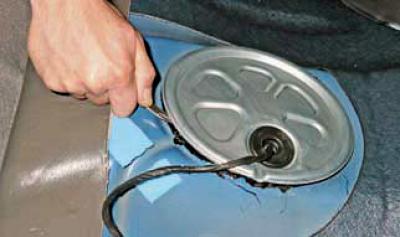
Prying off the cover of the fuel module hatch with a slotted screwdriver..
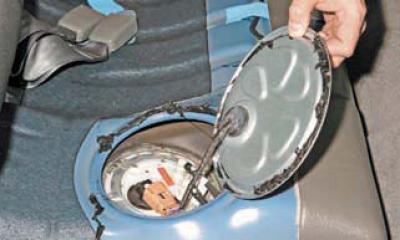
... remove the cover, overcoming the resistance of the mastic applied to the surface of the cover to the hatch.
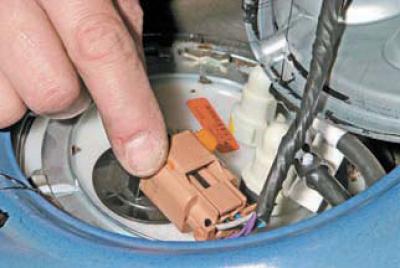
We move the blocker (orange color) wiring harness pads and by pressing the pad retainer..
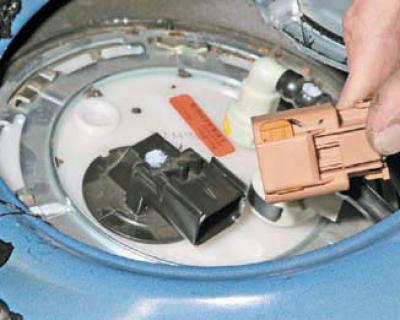
... remove the wiring harness block.
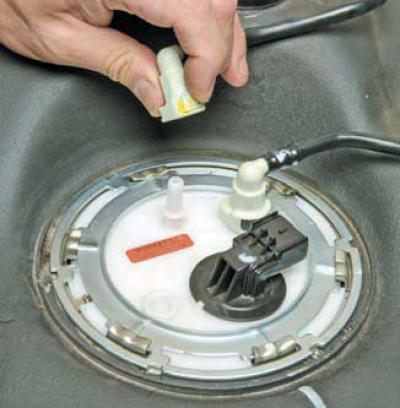
Squeezing the latch of the drain line tube tip, remove the tube tip from the fitting of the fuel module cover.
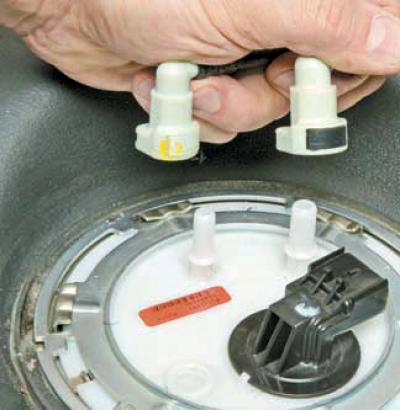
Similarly, from the other fitting of the module cover, remove the tip of the discharge line tube.
To unscrew the lock washer, it is best to use sliding pliers.
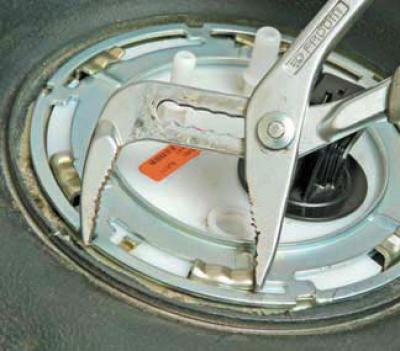
Having hooked one sponge of the pliers on the cavity on the washer, and the other on the protrusion of the fuel tank, we squeeze the handles of the pliers.
The puck will rotate through a small angle. Again (or several times) using this technique on the protrusions located diametrically opposite, we turn the lock washer of the fuel module cover counterclockwise until the grooves in the washer and the protrusions in the fuel tank flange coincide..
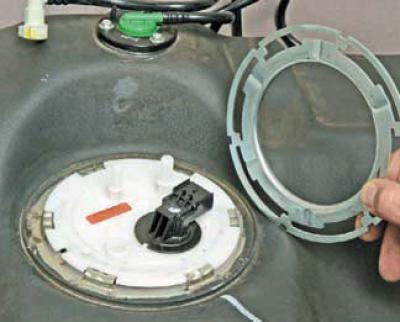
... and remove the puck.
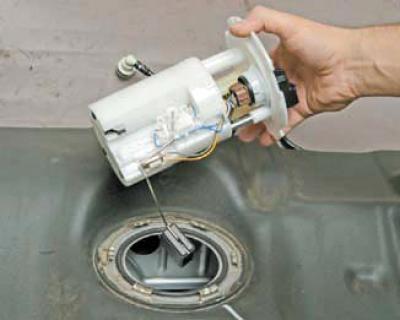
We remove the fuel module from the opening of the fuel tank, carefully removing the float of the fuel level sensor.

The connection between the fuel module cover and the tank opening flange is sealed with a rubber ring.
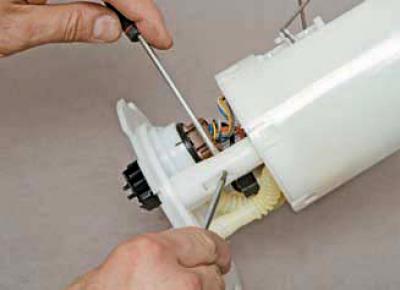
Having pressed two latches with screwdrivers, we shift the module cover along the housing guide.
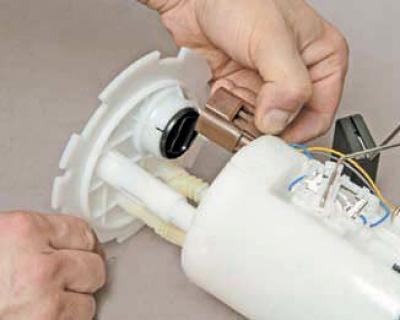
Pressing the lock of the wire block, disconnect the block from the connector of the module cover.
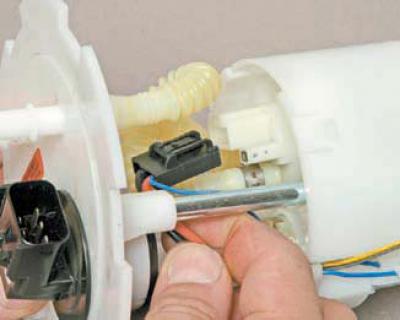
By pressing the latch of the wire block, disconnect the block from the fuel pump connector.
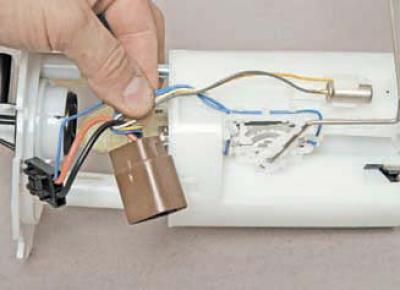
We remove the wires from the holder on the module case.
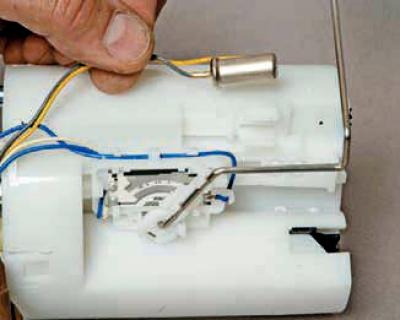
We take out the resistor of the control lamp of the fuel reserve from the holder.
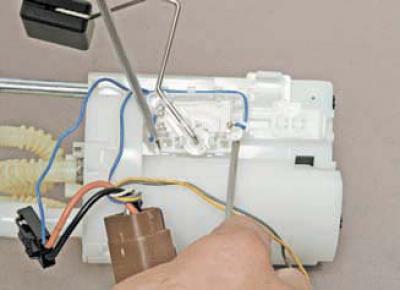
We shift the fuel gauge sensor along the guides of the module housing..
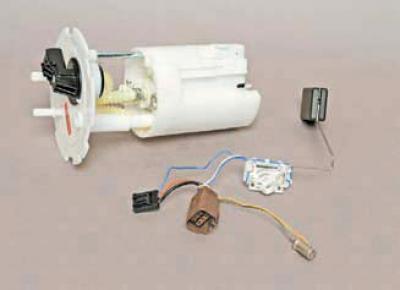
... and remove the assembly, consisting of a fuel gauge sensor with a float, a fuel reserve warning lamp resistor and two blocks with wires.
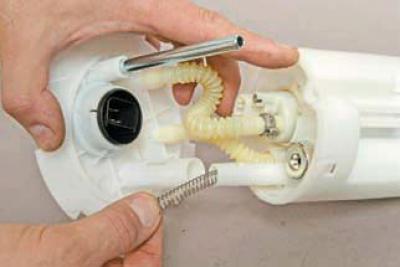
We take the cover of the module away from its body and take out the guide spring.
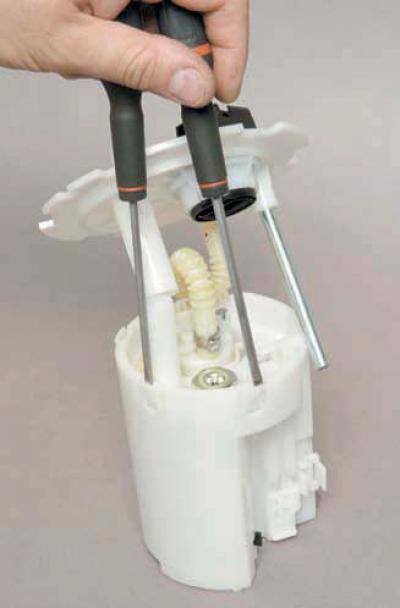
Having pressed the four latches of the fuel pump holder with flat screwdrivers, we extend the holder from the module housing.
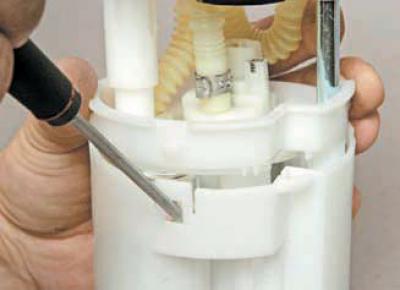
We pry the fuel pressure regulator with a screwdriver through the hole in the module housing.
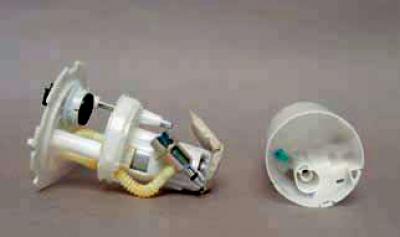
Overcoming the resistance of the rubber ring, put on the drain pipe of the regulator, we take the regulator out of the well of the fuel module housing and disconnect the pump holder and the module housing.
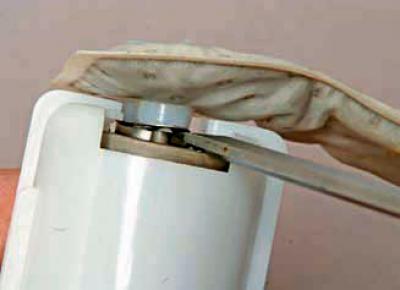
Using a flathead screwdriver pry the strainer..
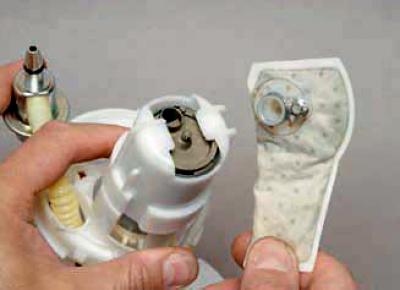
... remove it from the fitting and pump pin.
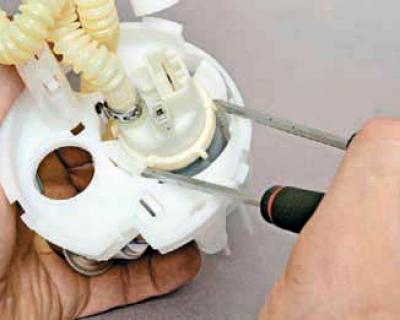
Using two flat screwdrivers, pry the pump holder latches from its clamping ring..
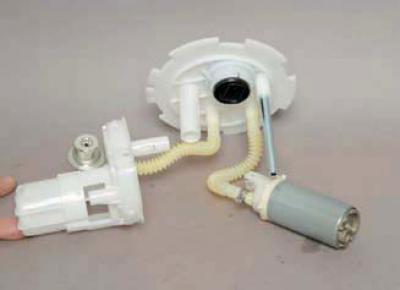
... remove the pump from the holder.
To replace the pump..
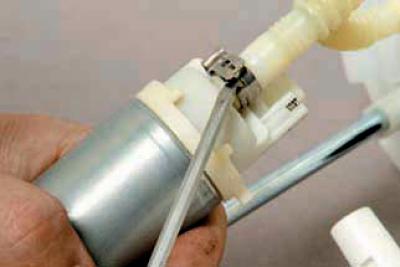
... with a screwdriver, open the lock of the clamp for fastening the plastic corrugated tube of the pump and slide the clamp along the tube.
The tube is installed on the pump nozzle with an interference fit. Therefore, to remove the tube, heat it with a hair dryer or pour boiling water over it.
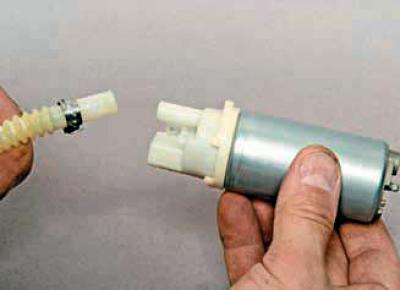
Remove the tube from the pump nozzle.
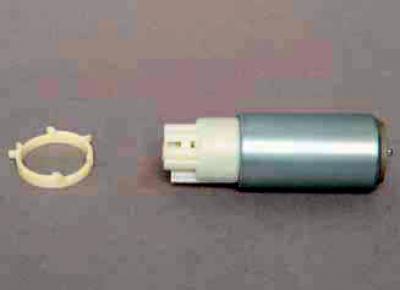
Remove the pressure ring from the pump housing.
To replace the fuel pressure regulator..
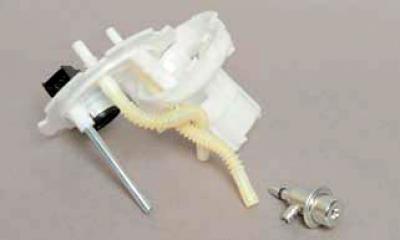
... remove the plastic corrugated tube from the regulator nozzle.
In case of difficulty in removing the tube, heat it with a hair dryer or pour boiling water over it.
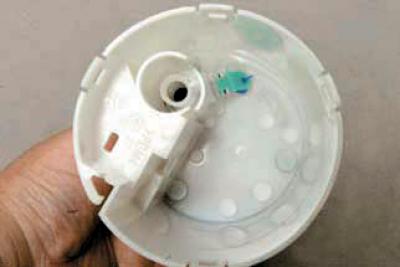
A valve is installed at the bottom of the fuel module housing to prevent fuel from flowing out of the housing.
We assemble and install the fuel module in the reverse order.
We replace the clamp for fastening the corrugated tube to the pump nozzle with a new one (you can use a worm clamp).
If the sealing ring of the module cover fails, replace it with a new one.
Before installing the strainer, pay attention to the condition of the lock washer that fits on the pump pin.
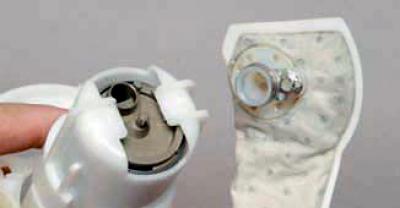
If the washer is badly dented, it must be straightened with pliers or replaced.
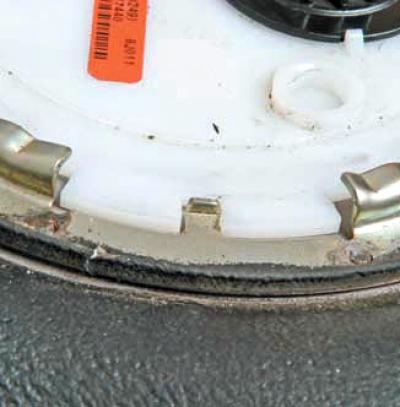
When installing the fuel module in the tank, we combine the cutout in the fuel module cover with the tongue on the flange of the tank opening.
Before closing the hatch cover in the floor of the body under the rear seat, it is necessary to check the tightness of the fuel module connections. To do this, connect the wire terminal to the "negative" terminal of the battery and turn on the ignition. There should be no fuel leakage.
